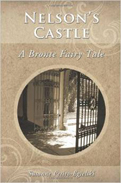
 |
It's easy to get lost in the multi-faceted draw of Susanne Petito-Egielski's novel. Rooted in the history of her own grandmother's hometown of Bronte, the author entertains readers with a captivating mid-19th century fairytale, ensconced in the tradition of castles, hierarchy, forests and beasts, a peasant heroine, magic, and madness.
Against the backdrop of Mt. Etna, aka "Mungibellu," the one-eyed monster, the bewitching peasant girl Gratia Maria Saitta, yearns for her mother Agata's love. The woman is hardened by the loss of her husband, Alfiu. In retaliation for Alfiu's death, Gratia vows vengeance against the Duke of Bronte's son. Here is a story played out with traditional themes of love vs. hate, jealousy and fear, family secrets, and class distinctions. In Gratia's home consider a doll is a lemon on a stick, while in sharp contrast she mistakes fanciful castle dolls for angels and dead women. Petito-Egielski's use of a transforming man/beast narrator lends a mystical presence to the work. Haunted by Alfiu's ghost, with visions revealed in a smoking ball of light, he follows Gratia along her journey. In a classic juxtaposition of good vs. evil, characters like the instrumental carter, Godmother Vincenza, and the kind shepherd boy serve well as counterparts to the sinister behavior of a self-serving doctor and his "green fairy" absinthe addiction. From lava rock crosses for protection, to "the Devil's color" in Gratia's hair; with healing rituals that expel evil into the "pisciaturi" chamber pot, to a willful eye patch reflecting blind-sided loyalties, the writing is enriched with symbolism and detail. While language stylings reflect the story's time and place, Italian phrases referenced throughout, appropriately provide another textured layer.
Overall Nelson's Castle is a creative blend of imagination and history. There is a helpful web link to the book offering photos, background, and study guides, and even suggestions in mind of actors as characters, should the work transfer to the cinematic realm. Think Snow White and the Huntsman under artful Fellini-style direction. This is a fantastical blend and an enchanting read.